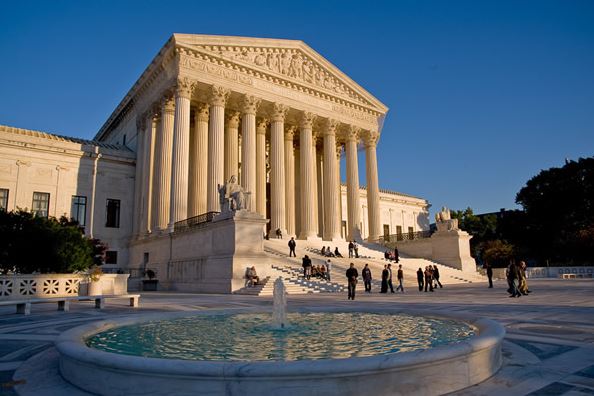
“We must become more comfortable with probability and uncertainty,” according to statistician and psephologist Nate Silver ”¦ in which case businesses and individuals alike must feel pretty comfortable when it comes to the proposed Trump tax plan.
The uncertainty stems from the fact that the Trump proposal, released on April 26, is more of an outline than an in-depth plan. Consisting of fewer than 200 words and just seven numbers, the document proposes cutting the corporate tax rate by more than 50 percent ”“ from 35 percent to 15 percent ”“ and allowing millions of small businesses that are structured so that they are affected by the individual tax rate to use the 15 percent rate as well.
In addition, the plan calls for replacing the seven income tax brackets with three new ones, eliminating the alternative-minimum tax and estate tax, and creating new incentives to simplify filing returns.
Connecticut business leaders said they appreciated the administration”™s proposed items in broad strokes, but mostly agreed that the lack of details was vexing.
“This is really just the title of the novel,” remarked Chris Bruhl, president and CEO of The Business Council of Fairfield County. “It”™s a series of goals, not realities, so it”™s really not very realistic to have any detailed sense of what it means.”
“It”™s just a starting point,” said Christine M. Brew, a tax attorney at Cohen and Wolf in Westport. “You”™ve got to start somewhere. But filling in the gaps is what will really be important.”
“Everyone is in some agreement on having some kind of tax reduction,” offered Michael Spiro, a tax attorney and partner at Finn Dixon & Herling in Stamford. “It seems like the stars are aligned for significant tax reform, with a Republican Congress and a Republican president committed to it. But the stars seemed aligned for health care reform, and that hasn”™t happened yet.”
Patriot Bank President Richard Muskus Jr. had a similar reaction. “The overall potential of people having more dollars in their pocket is of course a positive,” he said. “For small businesses, more dollars in their pocket means having the ability to focus on things like business extension, infrastructure, working capital.”
On the other hand, he said, “Going from seven tax brackets to three could help some people and hurt others, depending on whether they get rounded up or down from where they are now.”
Sean M. Cahill, principal and managing director of realtor Avison Young”™s Fairfield/Westchester office, said that the counties would experience a net positive should the plan go through as written.
“The Trump tax cut will not only help the corporate bottom line but would be a catalyst to reversing declining employment and office occupancy in the office market,” he said. “The activities in Manhattan and its financial services sector have had a negative effect on Stamford and Greenwich for 10 years, with a decline in employment due to a lot of regulation and M&A activity, which has resulted in a negative trend throughout Fairfield County.
“Will [the tax cut] have an effect on that sector? We think it will,” he added. “There”™s a positive business attitude that the new administration brings. And deregulation in the financial services sector will have a much deeper and larger impact both in Manhattan and suburban New York City, including Fairfield County and to a lesser extent Westchester.”
The picture for homeowners is potentially less positive, however. National Association of Realtors President William E. Brown called the proposal a “non-starter for homeowners and real estate professionals,” maintaining that, by doubling the standard deduction and repealing the state and local tax deduction, the plan would essentially nullify the current tax benefits of owning a home for the vast majority of tax filers.
“The mortgage interest deduction and the state and local tax deduction make homeownership more affordable, while 1031 like-kind exchanges help investors keep inventory on the market and money flowing to local communities,” Brown said. “Those tax incentives are at risk in the tax plan. Current homeowners could very well see their home”™s value plummet and their equity evaporate if tax reform nullifies or eliminates the tax incentives they depend upon, while prospective homebuyers will see that dream pushed further out of reach.
“As it stands, homeowners already pay between 80 and 90 percent of U.S. federal income tax,” he added. “Without tax incentives for homeownership, those numbers could rise even further. And while we appreciate the administration”™s stated commitment to protecting homeownership, this plan does anything but.”
“When you look at the plan you wonder what will happen to the mortgage interest rate and the housing industry,” agreed Margaret Price, who owns lumber firm Ridgefield Supply Co. “It won”™t matter for people with bigger homes, but it could have an impact on the housing industry and the building industry. Will people be entering home ownership if this goes through?”
Price also noted that, almost at the same time that the tax proposal came to light, Trump announced plans to hit Canada with tariffs of up to 24 percent on lumber shipped into the U.S. Noting that a lot of the cedar and pine used for boards, siding and other construction is grown in Canada, she said the result “would increase the cost of doing business. Going American-made is good, but it”™s hard to choose the country that a tree grows in,” she said.
Price agreed that in general small businesses would benefit from the plan”™s implementation as written.
“Fifteen percent is obviously wonderful, as is eliminating the state tax, which has always plagued small business owners,” she said. “Unlike large corporations, we don”™t have large legal and tax teams, we”™re not GE or a large hedge fund. So the 15 percent tax rate is very encouraging.”
Noting that she hoped the tax cuts would inspire people to spend more on their homes, Price added: “The devil”™s in the details, but we don”™t know the details yet. It”™s very encouraging that [Trump] wants to do something, but we still have to define what that something in. It”™s great to throw out ideas with certain percentages, but let”™s get into the nitty-gritty.”
“The devil is in the details,” agreed Connecticut Business & Industry Association Economist Pete Gioia. “It”™s a good idea that we”™re revisiting the U.S. tax code ”“ there”™s universal agreement that it”™s a mess.”
Noting that the current corporate tax rate of 35 percent “is way off” what most of the nation”™s major trading partners have in place ”“ Germany”™s stands at 29.72 percent, Canada”™s maxes out at 26 percent on a federal level, and the U.K.”™s stands at 20 percent but is due to fall to 17 percent by 2020 ”“ Gioia said a reduction is “long overdue.”
Sharing that opinion was Lucjan T. Orlowski, an economics professor at Sacred Heart University. “A corporate tax rate of 15 percent is a bit too low because it may result in additional pressure on the federal government deficit,” he noted. “I”™d like to see it at around 18 percent, which would make us more competitive while not letting the deficit grow out of all proportion.”
Reviewing the plan, the Tax Policy Center said that federal revenues would fall by $6.2 trillion over the first decade before accounting for added interest costs. Including those costs, the federal debt would rise by $7.2 trillion over the first decade and by $20.9 trillion by 2036, it said.
“It would boost the federal deficit short-term,” Gioia opined, “but I think it would generate enough activity for more money to stay here and be invested here, which would offset that effect.”
Orlowski also had praise for Trump”™s interest in a 10 percent tax on the more than $2.6 trillion in earnings that U.S. companies have accumulated offshore. “How much of the $2.6 trillion of capital allotted by U.S. companies and residents overseas will be brought back here ”“ and how will they use it?” he asked. “If 75-80 percent of that $2.6 trillion is transferred in, that”™s about $2 trillion of capital influx to the United States ”“ or about a ninth of U.S. GDP ”“ a tremendous amount.
“But will it be used for additional direct investment?” he continued. “Maybe some ”“ the 4.7 percent unemployment rate could improve. But it could be used for something else, like M&A.”
A new Ernst & Young survey, conducted before the Trump plan was announced, found that 79 percent of U.S. executives expect to pursue an M&A transaction this year, up from the 75 percent EY recorded in October 2016, with 54 percent believing the new administration is creating more M&A opportunities. In addition, 46 percent said they were factoring potential revision of the corporate tax code into their M&A strategies.
Charles S. Tusa, a tax attorney with Gilbride, Tusa, Last & Spellane in Greenwich, brought up another intriguing possibility involving a loophole within the 15 percent corporate tax rate, when applied to “pass-through” organizations such as limited liability companies and S corporations. As it stands, an employee of such a company could declare himself an LLC and thus take advantage of the 15 percent tax rather than the applicable personal income tax rate.
“It”™s a very intriguing concept,” Tusa said.
As with his attorney colleagues, Tusa said that his clients are “monitoring things closely,” taking solace from many of the plan’s proposals but reluctant to draw any workable conclusions.
Minus details about the Trump plan, talk inevitably turned to the tax situation in Connecticut. According to WalletHub, the Nutmeg State has the nation”™s sixth-highest tax burden at 10.23 percent ”“ well behind #1 New York”™s 12.94 percent but steeper than neighboring Massachusetts’ 9.01 percent. Connecticut also has the sixth-highest corporate tax rate, at 9 percent.
In addition, Comptroller Kevin Lembo said on May 2 that continued erosion of the state income tax ”“ likely due to a combination of investors relying more on tax-friendly investment funds, an economic trend towards lower-paying jobs and population loss ”“ has increased the current fiscal year deficit to $393.4 million. The Budget Reserve Fund has a current balance of $235.58 million ”“ an insufficient sum to cover the current General Fund deficit, Lembo added.
And according to the latest data from the state Department of Labor, Connecticut has regained only 74 percent, or 91,200, of the 119,100 jobs lost during the Great Recession — more than 23 percentage points below its nearest Northeast competitor, Maine.
“Connecticut needs to follow suit (with the Trump proposal) in order to maximize the growth potential in corporations and employment, and therefore help the real estate community, both residential and commercial,” Cahill said. “Some deregulation of the financial services industry and easing of the corporate tax rate, and of the personal income tax rate on a federal level, would increase consumer confidence.”
“Everybody needs predictability and competitive tax policies,” declared Joe McGee, vice president, public policy and programs at The Business Council of Fairfield County. “It”™s always a good thing to have these discussions, but we need clarity and real motivation in a lot of areas.”
Orlowski said that Sacred Heart”™s College of Business students”™ Economic Outlook report, presented on May 3, forecasted only a 0.2 percent growth for Connecticut”™s economy. “We”™ve tried to optimize that, but even by working from different models it just doesn”™t want to go much higher,” he said.
When ”“ or if ”“ true tax reform takes place on the federal and/or state level remains to be seen. None of those interviewed said they expected the Trump plan to win Congressional approval without significant modifications (and details, of course).
“Anything that doesn”™t give more benefits to the middle and lower class will face ferocious opposition by Democrats, and probably some moderate Republicans,” Gioia said.
“It”™s a fascinating time to be a business owner in America,” Price laughed.





















